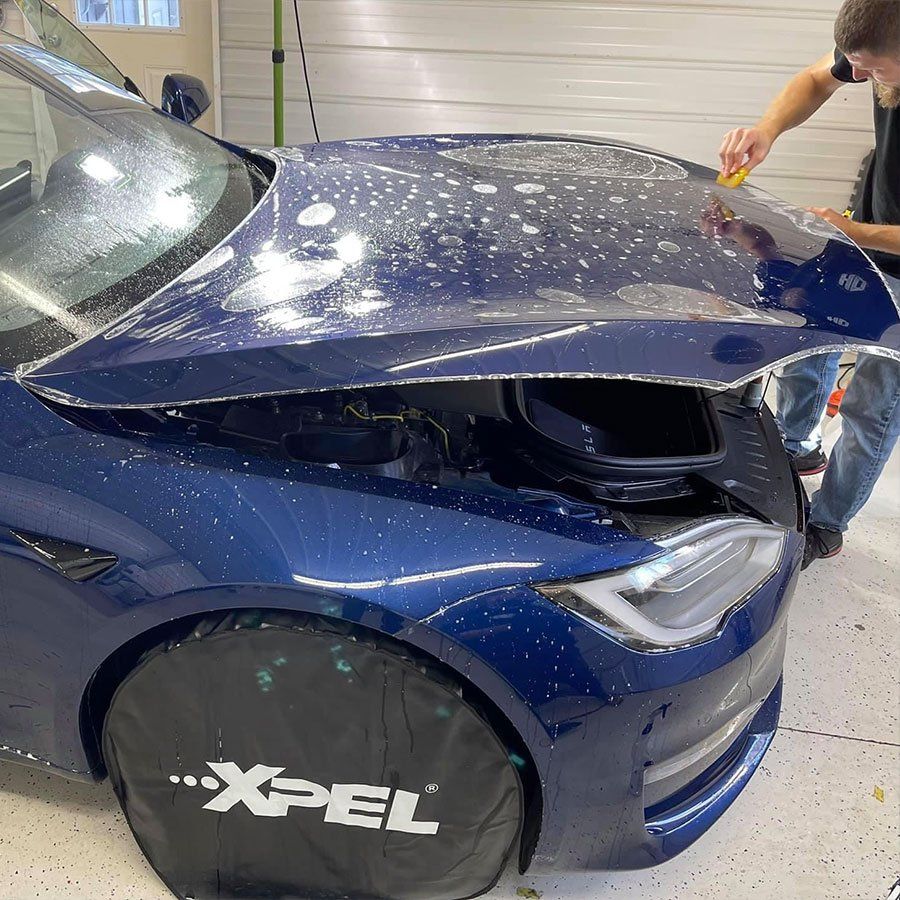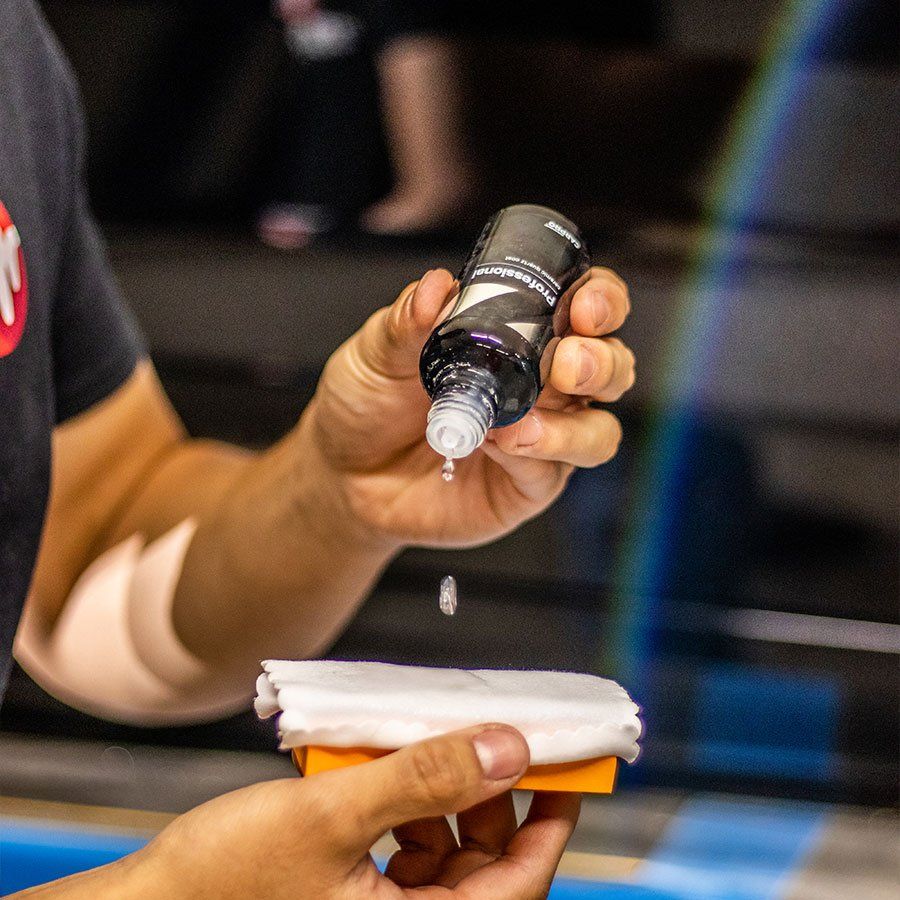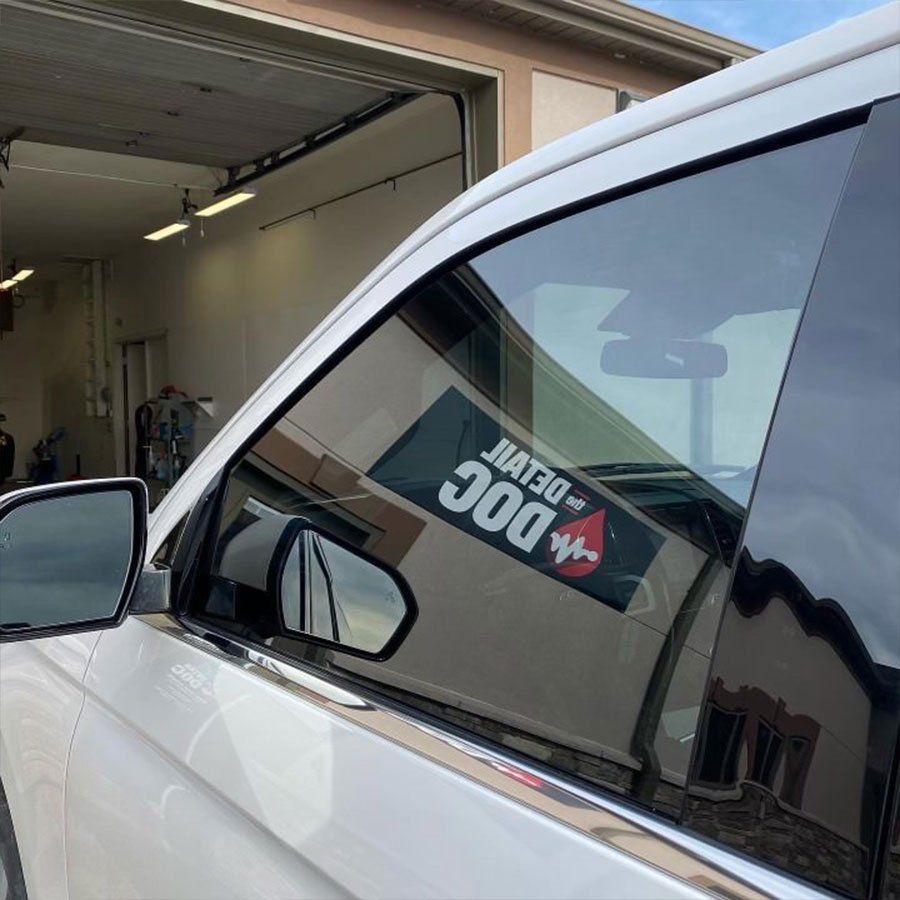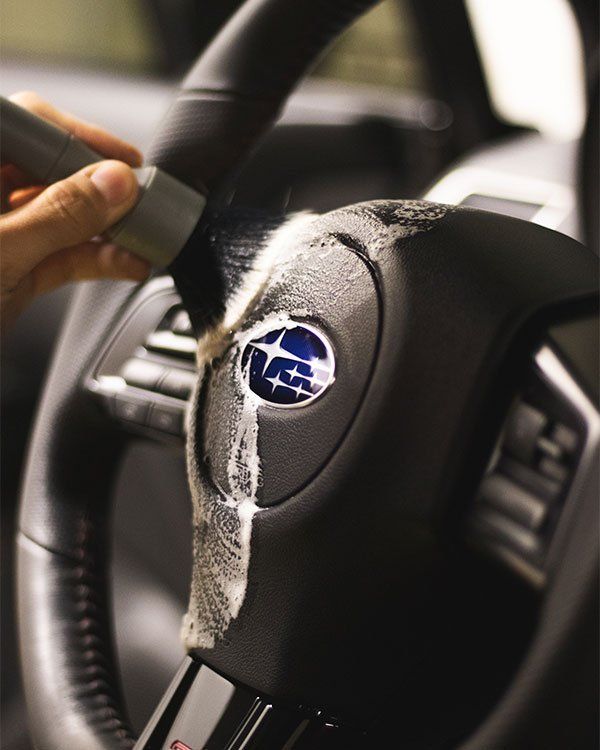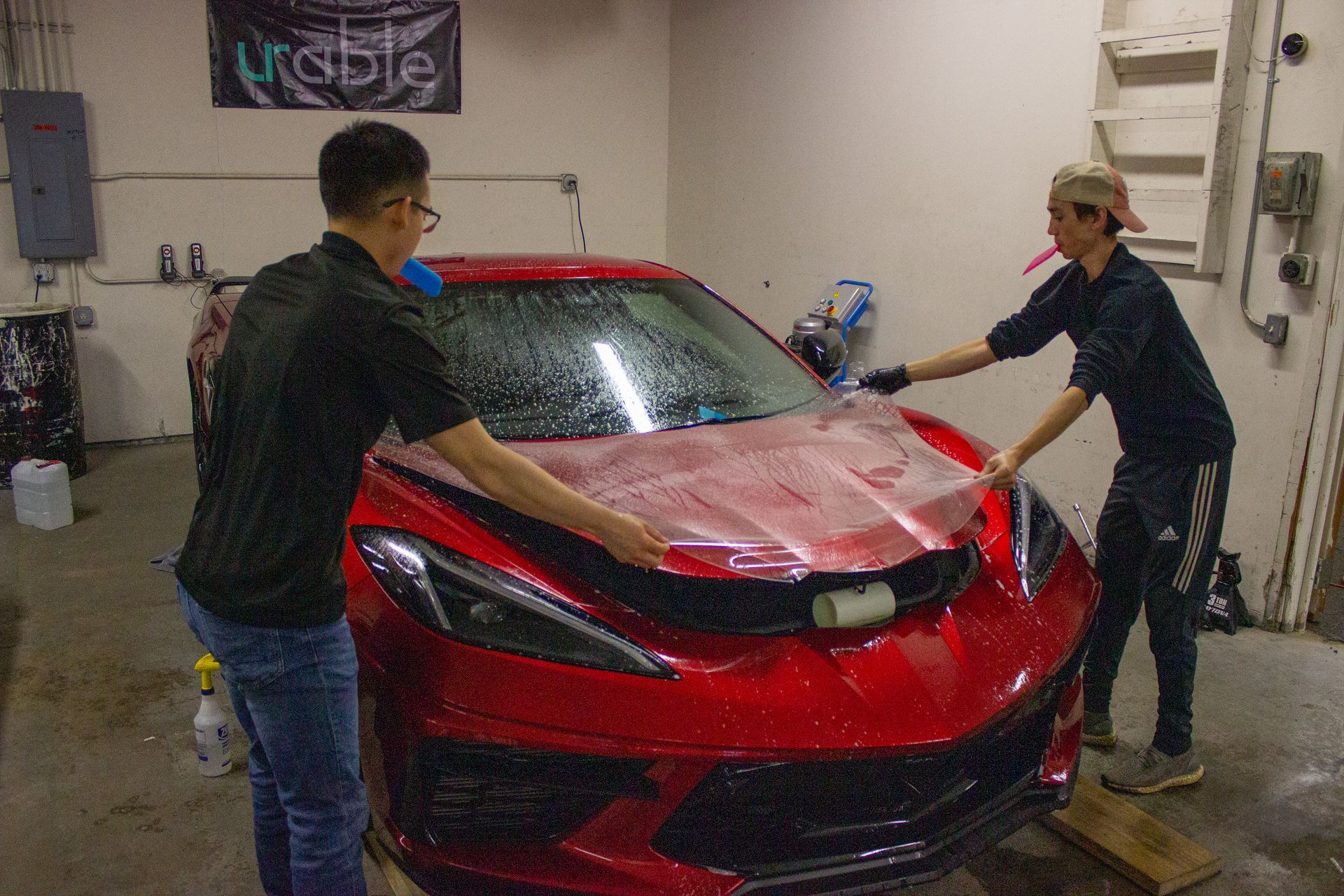Have you ever observed a professional artist carefully etching intricate details onto a canvas, creating a masterpiece? The precision, patience, and passion involved in the process are awe-inspiring. Now imagine your car as that canvas, and you are the artist. But instead of a paintbrush and a palette, you have sponges, soap, and detailed tools at your disposal. Welcome to the art of auto detailing! In this blog post, we'll turn you into an auto-detail artist. We promise that by the end of it, not only will your car sparkle like new, but you may well find yourself falling in love with what can only be described as an incredibly rewarding process! Hang on tight; it's going to be a beautifully detailed ride!
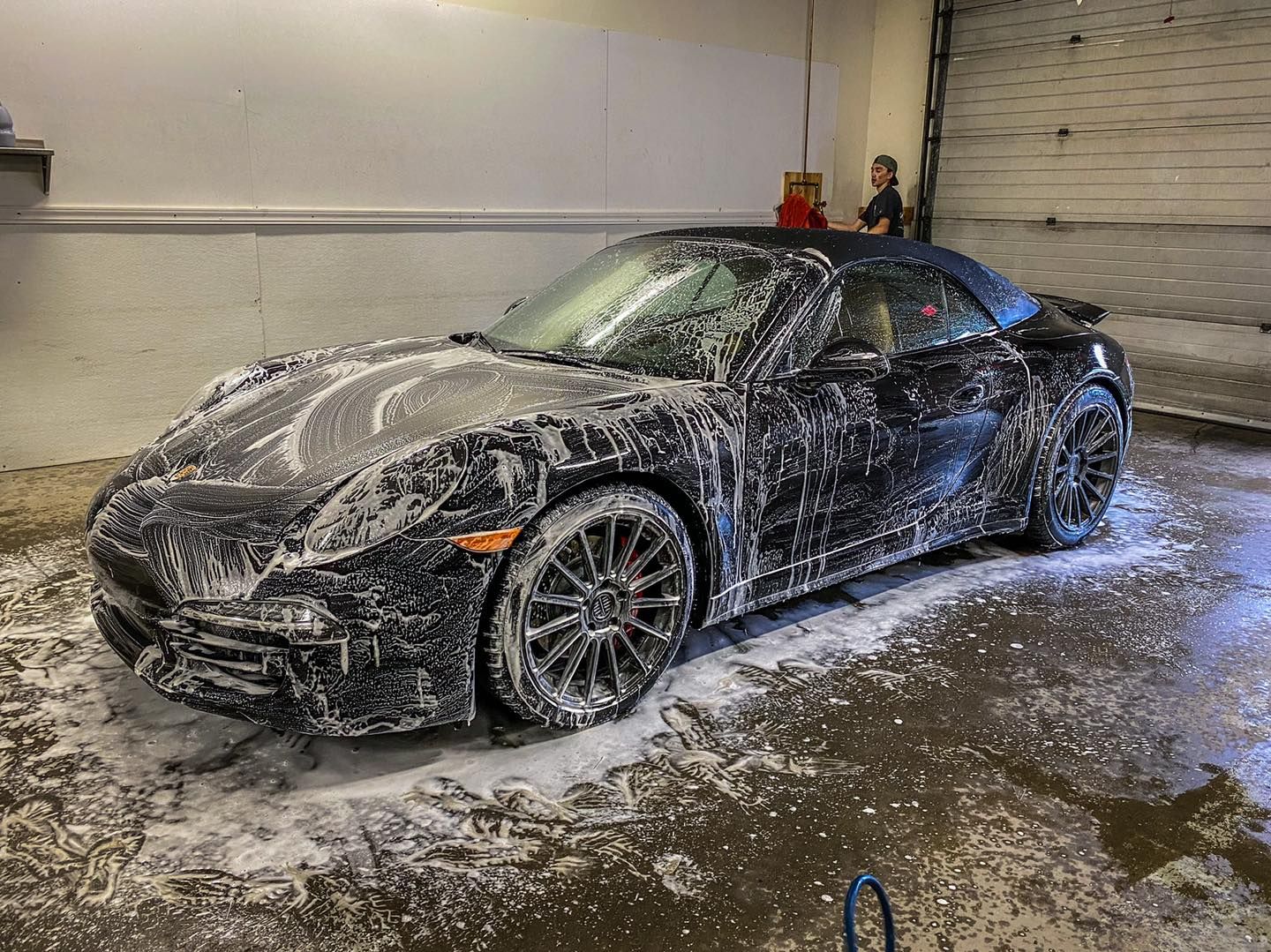
The Detail Doc's Car Washing Procedure
Washing a vehicle may seem simple, but the right technique and tools can make a big difference in the end result. At The Detail Doc, we follow a thorough car washing procedure to provide our clients with clean and spotless vehicles that look their best. Our experienced professionals have devised this process by combining their extensive knowledge of detailing techniques with advanced tools and high-quality cleaning agents.
To give you an idea of how we work, our car washing procedure typically starts with a pre-wash stage where we clean off any loose dirt or debris on your vehicle with a light hose rinse. We then foamed up the entire car's surface using a snow foam cannon paired with a power washer. This step helps loosen up any remaining dirt particles and prepares the surface for the actual wash.
With our methodical approach to cleaning cars, we aim to ensure that every nook and cranny of your vehicle is scrupulously clean.
- According to a 2023 study by the International Carwash Association, nearly 80% of Americans believe that keeping their car clean can significantly extend their lifespan.
- A survey conducted by the American Automobile Association in 2023 revealed that about 60% of car owners wash their vehicles once a month, but experts like The Detail Doc recommend a more frequent schedule for optimal maintenance.
- Research from the Automotive Aftermarket Industry Association in 2023 suggested that using inappropriate cleaning methods or materials could potentially damage a vehicle's exterior and reduce its resale value by up to 10%.
To help you achieve that too, let's take a closer look at the essential steps for effective washing.
Essential Steps for Effective Washing
When it comes to washing a vehicle effectively, there are certain steps that you need to follow. To prevent causing any damage to the paintwork and ensure that your car looks shiny and new every time you wash it, consider the following:
Firstly, pre-wash your car with a high-pressure washer or hose. This will get rid of any loose dirt or debris that could scratch your paintwork when washed. We recommend using a trigger gun nozzle when using a pressure washer, as it helps regulate the pressure.
Next, start from the top and work your way down as you wash each panel of your car with a mild car shampoo solution. Use either a thick microfiber sponge or mitt along with two buckets. Remember not to scrub too hard; instead, apply gentle circular motions while working down. A cleaning agent used improperly can result in stains, swirls, and other issues.
Once done, rinse off all the shampoo from the surface using a high-pressure hose or power washer. Make sure to do it right because leaving soapy remains on your paintwork can lead to water spotting and cause streaks. It's like applying soap to your hands and then washing it off properly before moving on to something else; if you don't rinse well enough before moving on, whatever follows will not have a clean starting point.
Lastly, dry all surfaces with either a chamois cloth or microfiber towel for the best results. Do not leave any areas wet; this can cause watermarks and etchings on windows.
Following these essential steps along with The Detail Doc's car washing procedure, you can achieve an effective and thorough cleaning of your vehicle's exterior.
Water Technique and Pressure Nozzle Usage
As tempting as it may be to blast your car with high-pressure water, this is a big no-no. High-pressure nozzle usage can strip off paint, damage the windshield, and even cause corrosion. Moreover, improper water technique can lead to deep scratches and swirls that ruin the vehicle's finish.
To illustrate why this is a problem, imagine you spilled some flour on a countertop, grabbed a high-pressure hose, and sprayed it off. What would happen? The flour would blow everywhere uncontrollably, making it impossible to clean up. That same concept applies to your car's finish. When you use high-pressure nozzles on your vehicle's surface, dirt and debris spread uncontrollably, causing more harm than good.
Instead of using high-pressure nozzles, use a garden hose or bucket filled with water to gently rinse off debris. Begin by applying light pressure while washing away loose dirt and grime from your car's surface. After a few minutes of pre-rinsing, you should reduce the pressure output of the hose nozzle by twisting it to the lowest setting before proceeding to the next step in washing your car.
But what if you live in an area where there is always mud or dirt? In such cases, pre-treating vehicles with grass guards or other protective covers that shield vulnerable areas is recommended before driving on unpaved roads. Additionally, changing weather conditions such as heavy rains also necessitate proper cleaning techniques since they can release moisture-absorbing substances onto surfaces in your vehicle.
Think of your car as an extension of yourself. Would you blast your skin with a high-pressure jet instead of gently applying soap and water for a proper cleansing routine? Treat your car similarly, and don't subject it to harsh water pressures.
Chemical Selection: A Guide by The Detail Doc
Cleaning solutions come in a varied range of forms, so it's no wonder they can be confusing. However, there are key items to keep top of mind when considering which products to use for your automotive detailing project. Below is a guide by The Detail Doc on chemical selection for car washing.
The first rule is - always opt for cleaning agents that are specifically formulated for automobiles. Avoid using household detergents and harsh chemicals since they can destroy the natural wax layer on your car's paint, which exposes it to more damage.
When using products like dishwashing soap or laundry detergent as cleaning agents, it's essential to remember that while they may seem gentle, they contain strong chemicals meant for surfaces other than automobiles. For instance, these cleaning agents contain ingredients that can interfere with your vehicle's sheen and finish, ultimately leading to significant damage in the future.
But what if you have already used detergent on your car? It's not too late to fix it. You can restore a damaged paint job with aid from specialty cleaners favored by experts like The Detail Doc.
Next, after ensuring that you are using specialized automobile cleaning agents, be careful with how you mix and apply them. Always follow the instructions provided on your product packaging by using only the recommended amounts and dilutions since overuse or underuse may harm your car's surface and shorten its lifespan.
Think of cleaning agents as medicine for your car. If you take too much medicine without following the proper directions or dosages prescribed by doctors, you'd put yourself at risk of overdose or serious complications. The same applies when you use more detergent than instructed or fail to dilute it correctly.
Understanding chemical selection is now a step ahead in your car washing process. However, this alone isn't enough. In the next section, we'll be discussing paneling and door jamb protection tips to ensure that all parts of your vehicle are attended to appropriately.
Choosing the Right Cleaning Agents
Choosing the right cleaning agents is essential when washing your vehicle. The wrong products can damage the paint, leaving it dull and lackluster. At The Detail Doc, our team of experts has tested a range of products to determine the most effective options for each type of vehicle. When choosing cleaning agents for your car, keep the following tips in mind.
First and foremost, avoid heavy-duty cleaners like dish soap or laundry detergent. These items are not designed for use on automotive paints and can strip away protective coatings, leading to permanent damage. Instead, opt for cleaners specifically formulated for cars. Choose a pH-neutral formula that will not harm the paint's finish.
In addition to choosing pH-neutral products, look for those that contain natural ingredients rather than harsh chemicals. These options are more environmentally friendly and less likely to cause skin irritation or allergic reactions. Plus, natural ingredients like plant extracts can provide additional benefits like shine enhancement or protection against UV rays.
Some car owners prefer using homemade solutions such as vinegar or baking soda mixed with water. While these methods may be effective at removing dirt and grime from tires or wheels, they are not recommended for use on painted finishes. The acidity of vinegar can damage clear coats and cause etching over time, while baking soda can be abrasive and scratch the paint.
Choosing the right cleaning products is similar to choosing the right skin care products. Just as you would select a gentle cleanser and moisturizer appropriate for your skin type, you should choose cleaning agents that are formulated specifically for your car's needs.
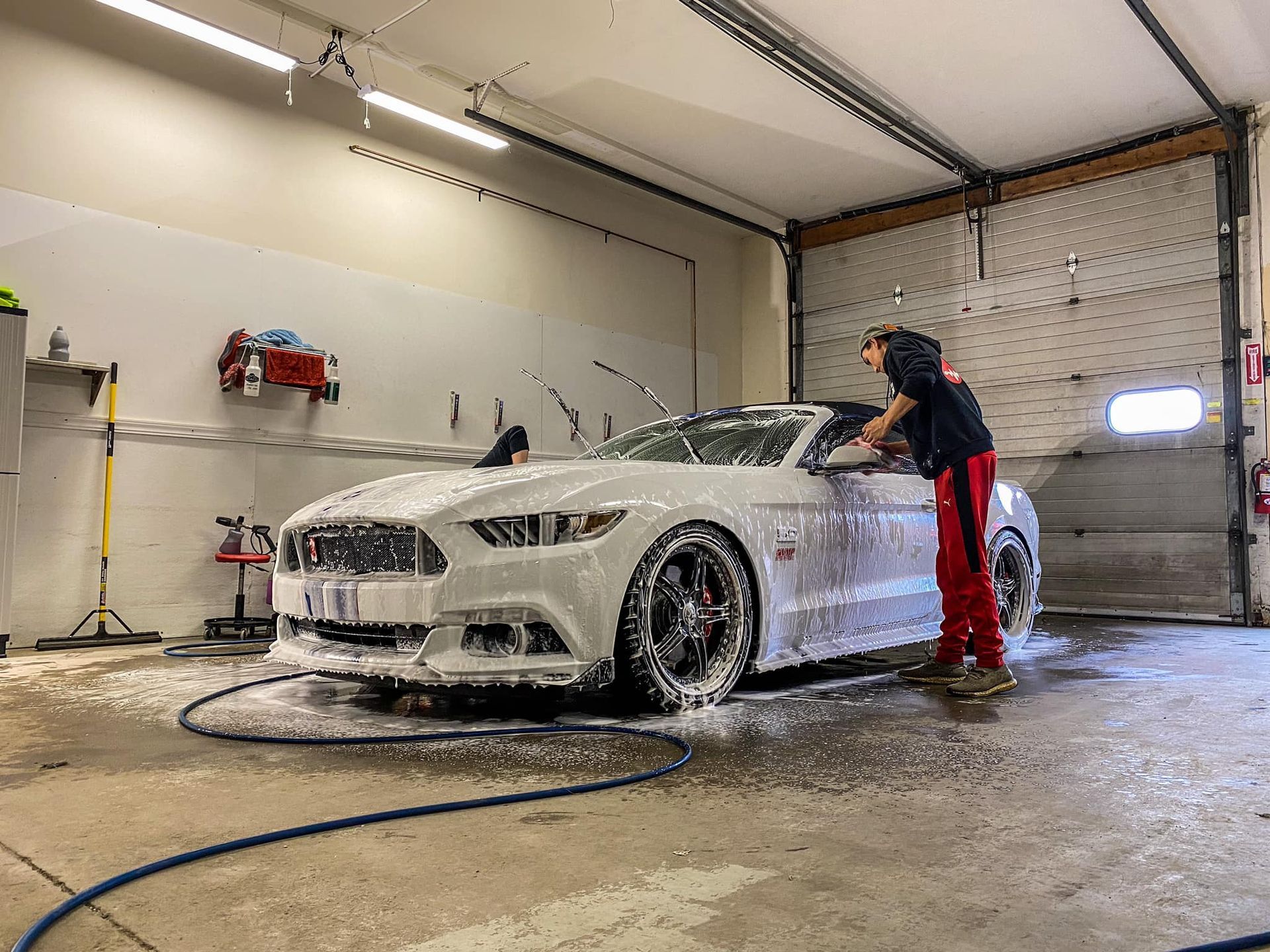
Drying Recommendations from The Detail Doc
Drying your vehicle is an essential part of the car washing process, as it prevents water spots and helps maintain the shine of your car. With improper drying techniques, however, your efforts at safeguarding the car may backfire. The Detail Doc has compiled some tips to help you dry your vehicle properly after a wash.
First and foremost, use a microfiber towel to dry your car. Microfiber towels have superior absorbency and are gentle on the surface of the car. Avoid using regular towels, as they can scratch the paint surface.
Secondly, remember that air drying is not recommended for cars due to minerals present in the water that can cause water spots. On hot days or when there's a lot of sunlight, water droplets will also dry rapidly and leave behind stubborn residue.
To ensure a spotless finish every time, The Detail Doc recommends using a leaf blower or compressed air dryer to remove excess water from crevices, joints, and other hard-to-reach areas such as mirrors and emblems before driving out of this station.
Lastly, should you decide to utilize an old technique such as chamois (leather fabric) for drying purposes rather than microfiber cloths or air blowers, be sure to dampen it with water first. A dry chamois won't be kind to your vehicle's smooth surfaces!
Techniques to Avoid Stains and Damage
Often overlooked in the car washing process is how easily carpets, mats, or even seats can acquire stains from excess water. The Detail Doc has specific recommendations to avoid damage or staining and protect the interior carpets and seats against moisture.
First, start by protecting carpets with plastic bags. Take an extra pair of unused grocery or trash bags, place one over each foot mat, and slide the mat back into position over it. This will prevent water from being absorbed by the mats, and laying on the metal of the vehicle's floor will not result in rusting.
Second, ensure all windows are closed during a car engine wash. While power washing can remove dirt from wire harnesses or hard-to-reach places around door jambs, when they are opened, water might penetrate door switch connections and lead to electrical faults.
Similarly, keep the sunroof tightly sealed, as any slight opening allows water to enter the cab.
Lastly, make sure you dry your windows properly after washing them, as mineral deposits left behind after evaporation can leave streaks or spots on the glass surface.
Final Words
Car washing techniques are essential to the care and appearance of your vehicle, from its appearance to its longevity. By following The Detail Doc's do's and don'ts list, you can ensure your car receives the TLC it requires. Always use high-quality products with gentle cleaning methods while paying close attention to detail!
Visit The Detail Doc's website for car washing tips and other useful insights, as well as their extensive resources, expert advice, and product recommendations to enhance your car washing routine.
Start taking steps now to raise your car washing game with these insightful tips from The Detail Doc—we'll ensure your vehicle receives a showroom-worthy shine and long-term beauty! Don't wait; visit today and unlock the secrets to a flawless car wash experience.

